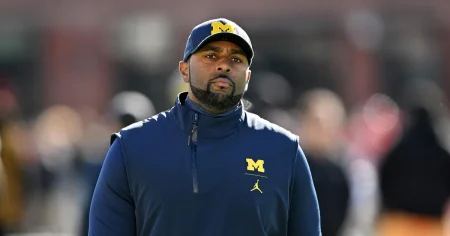From Page to Screen: Dissecting Peacock’s “All Her Fault” Adaptation
In November 2025, Peacock premiered “All Her Fault,” a gripping mystery series based on Andrea Mara’s novel that follows the harrowing journey of a mother named Marissa (portrayed by Sarah Snook) whose young son Milo vanishes during his first playdate. As the search intensifies, dark secrets about those in Marissa’s inner circle begin to surface, turning everyone into a potential suspect. While the show maintains the core narrative tension of the novel, the adaptation made several significant creative departures that enhanced the storytelling for television. As cast members Abby Elliott and Daniel Monks revealed in exclusive interviews, they were actually advised not to read the original book before filming to avoid confusion, as their characters had been substantially reimagined for the screen version. “For me with the novel, I started reading, and their Brian seemed unrecognizable from the one that Megan had written,” Monks explained, referring to the showrunner’s vision for his character.
One of the most substantial changes in the adaptation involves the expansion of Peter’s family dynamics. While the book kept Lia (played by Abby Elliott) largely on the periphery as a character based in New York while the main action occurred in Dublin, the show brought her character closer to the center of the drama and relocated the entire story to Chicago. The television version created a more complex backstory for Lia, depicting her struggle with substance abuse issues and introducing a secret relationship with Marissa’s business partner Colin (Jay Ellis) – a relationship that becomes even more complicated after Colin’s death. Similarly, Brian’s character underwent significant transformation; while both versions have him living in Peter’s (Jake Lacy) home, the show adds the dramatic element that Brian became disabled following a childhood accident involving his sibling, creating another layer of mystery and emotional tension within the family structure.
The friendship between Marissa and Jenny (Dakota Fanning) received more prominent treatment in the Peacock adaptation, particularly regarding their conspiratorial bond. In a major deviation from the source material, the television version shows Marissa confiding in Jenny about her plan to eliminate her husband Peter – a plot point entirely absent from Mara’s novel. This change intensifies the relationship between the two women and raises the stakes of their shared secrets, creating more dramatic possibilities for the screen narrative. The adaptation also took a different approach to Jenny’s personal life. While both versions explore troubles in her marriage, the book attributed these issues primarily to difficulties with her mother-in-law, leaving open the possibility of reconciliation with her estranged husband. The television series, however, takes a more definitive stance on the breakdown of Jenny’s marriage, making their separation appear more permanent and allowing Jenny’s character greater independence in the storyline.
Perhaps the most striking differences between the book and television adaptation involve the circumstances surrounding the major deaths in the story. The show significantly altered how certain murders were committed – in the adaptation, Rob kills Kyle in a different manner than described in the book, and Peter’s method of killing Carrie changes from smothering her with a pillow to shooting her. Even the cause of Peter’s own death received a modification, with his fatal allergic reaction coming from soy rather than shellfish as depicted in the novel. These alterations, while maintaining the core plot points of who kills whom, changed the visual and emotional impact of these pivotal moments for viewers. The writers likely made these adjustments to either increase dramatic tension or to better suit the visual medium of television, where certain types of violence or death scenes might be more effective or practical to film.
The adaptation also streamlined certain character backstories while expanding others. Carrie (Sophia Lillis), for instance, received less exploration regarding her mother’s influence in the television version. The book delved deeper into how Carrie’s mother manipulated her daughter’s legal troubles for personal gain, creating a more complex understanding of Carrie’s motivations and vulnerabilities. By reducing this element, the show perhaps sacrificed some character depth but maintained a tighter focus on the central mystery. This selective approach to character development demonstrates how adaptations must make difficult choices about which elements of a complex novel to emphasize or reduce for the screen format, balancing narrative economy against character richness.
Conversely, the television series expanded the role and personal stake of Detective Alcaras, played by Michael Peña. While the novel gave this investigative character limited screen time and kept him relatively detached from the personal aspects of the case, Peacock’s adaptation created a more intimate connection between the detective and the investigation. This change allows viewers to experience the mystery partly through the eyes of law enforcement, creating additional tension and providing another perspective on the unfolding events. It also gave Peña’s character a more substantial arc and emotional investment in solving the kidnapping, potentially making the procedural elements of the story more engaging for viewers. These creative liberties taken by the showrunners illustrate the different storytelling needs of television versus literature, where visual medium often benefits from stronger character connections and more varied perspectives to maintain viewer engagement across multiple episodes.













